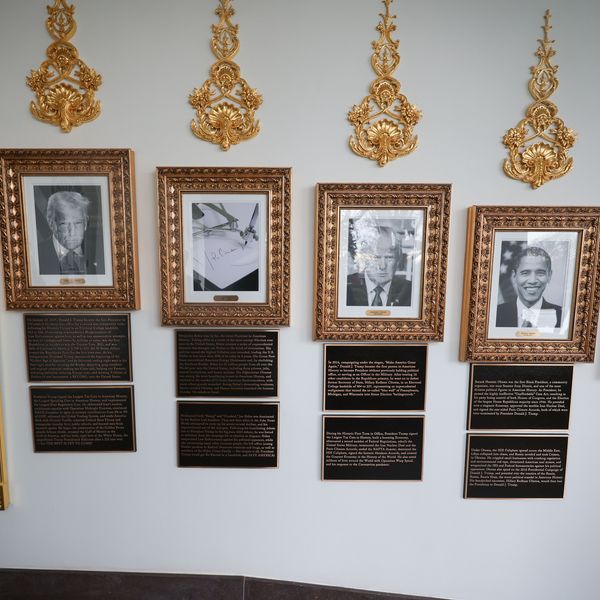The High Price of US Nukes
As President Obama and Republicans in Congress go down to the wire in negotiations over a package of budget cuts that would clear the way for raising the debt ceiling, we shouldn't lose sight of one key source of reductions: military spending. Although it was not mentioned in the President's press conference earlier this week, there has been a press report suggesting that the budget negotiators may have considered cuts of up to $700 billion over ten years -- a healthy sum if it represents real reductions, not funny money projections based on misleading estimating techniques.
As Joseph Cirincione of the Ploughshares Fund has demonstrated in a piece that ran today on the web site of the Atlantic magazine, one area ripe for cuts is the nuclear weapons budget. Current projections call for the expenditure of hundreds of billions of dollars over the next decade on maintaining and upgrading the U.S. nuclear arsenal, including everything from new nuclear weapons factories to new bombers and ballistic missile submarines.
Here are just a few examples of nuclear weapons-related projects that could be done without at a time when nuclear arsenals are on the decline:
--One hundred new bombers, at a currently estimated price of $55 billion;
--A dozen new ballistic missile launching submarines, at a cost estimated by the Congressional Budget Office at $8.3 billion each, for a total of nearly $100 billion;
-- A Chemistry and Metallurgy Research Replacement (CMRR) facility at Los Alamos National Laboratories that would produce plutonium "pits" or triggers, an essential component for building a nuclear weapon, at an estimated price of up to $6 billion;
--A Uranium Processing Facillity at the NNSA's Oak Ridge, Tennessee site, at a cost estimated by the Army Corps of Engineers of up to $7.5 billion.
At this stage in history, U.S. nuclear weapons serve no useful purpose other than preventing another nation from using nuclear weapons against the United States. And a study by two professors of military strategy at U.S. military colleges has suggested that that mission could be accomplished with roughly 300 warheads, compared with the 1,550 deployed warheads permitted under the New START treaty, and the roughly 5,000 currently in the U.S. stockpile if one counts all categories of non-deployed weapons. Going down to these levels would save additional billions in reduced operating and maintenance costs for the arsenal as a whole.
Not only have a growing list of former secretaries of state and defense, presidents and prime ministers, scientists and retired military officials called for the elimination of nuclear weapons, but if pushed by budgetary realities so would many current U.S. military leaders. While they won't say so publicly, if forced to choose between nukes and major conventional systems it is my bet that nukes would lose out in that particular budget battle.
So as the president and the Congress continue to look for places to reduce spending, the nuclear weapons budget should be high on the list.
An Urgent Message From Our Co-Founder
Dear Common Dreams reader, The U.S. is on a fast track to authoritarianism like nothing I've ever seen. Meanwhile, corporate news outlets are utterly capitulating to Trump, twisting their coverage to avoid drawing his ire while lining up to stuff cash in his pockets. That's why I believe that Common Dreams is doing the best and most consequential reporting that we've ever done. Our small but mighty team is a progressive reporting powerhouse, covering the news every day that the corporate media never will. Our mission has always been simple: To inform. To inspire. And to ignite change for the common good. Now here's the key piece that I want all our readers to understand: None of this would be possible without your financial support. That's not just some fundraising cliche. It's the absolute and literal truth. We don't accept corporate advertising and never will. We don't have a paywall because we don't think people should be blocked from critical news based on their ability to pay. Everything we do is funded by the donations of readers like you. Will you donate now to help power the nonprofit, independent reporting of Common Dreams? Thank you for being a vital member of our community. Together, we can keep independent journalism alive when it’s needed most. - Craig Brown, Co-founder |
As President Obama and Republicans in Congress go down to the wire in negotiations over a package of budget cuts that would clear the way for raising the debt ceiling, we shouldn't lose sight of one key source of reductions: military spending. Although it was not mentioned in the President's press conference earlier this week, there has been a press report suggesting that the budget negotiators may have considered cuts of up to $700 billion over ten years -- a healthy sum if it represents real reductions, not funny money projections based on misleading estimating techniques.
As Joseph Cirincione of the Ploughshares Fund has demonstrated in a piece that ran today on the web site of the Atlantic magazine, one area ripe for cuts is the nuclear weapons budget. Current projections call for the expenditure of hundreds of billions of dollars over the next decade on maintaining and upgrading the U.S. nuclear arsenal, including everything from new nuclear weapons factories to new bombers and ballistic missile submarines.
Here are just a few examples of nuclear weapons-related projects that could be done without at a time when nuclear arsenals are on the decline:
--One hundred new bombers, at a currently estimated price of $55 billion;
--A dozen new ballistic missile launching submarines, at a cost estimated by the Congressional Budget Office at $8.3 billion each, for a total of nearly $100 billion;
-- A Chemistry and Metallurgy Research Replacement (CMRR) facility at Los Alamos National Laboratories that would produce plutonium "pits" or triggers, an essential component for building a nuclear weapon, at an estimated price of up to $6 billion;
--A Uranium Processing Facillity at the NNSA's Oak Ridge, Tennessee site, at a cost estimated by the Army Corps of Engineers of up to $7.5 billion.
At this stage in history, U.S. nuclear weapons serve no useful purpose other than preventing another nation from using nuclear weapons against the United States. And a study by two professors of military strategy at U.S. military colleges has suggested that that mission could be accomplished with roughly 300 warheads, compared with the 1,550 deployed warheads permitted under the New START treaty, and the roughly 5,000 currently in the U.S. stockpile if one counts all categories of non-deployed weapons. Going down to these levels would save additional billions in reduced operating and maintenance costs for the arsenal as a whole.
Not only have a growing list of former secretaries of state and defense, presidents and prime ministers, scientists and retired military officials called for the elimination of nuclear weapons, but if pushed by budgetary realities so would many current U.S. military leaders. While they won't say so publicly, if forced to choose between nukes and major conventional systems it is my bet that nukes would lose out in that particular budget battle.
So as the president and the Congress continue to look for places to reduce spending, the nuclear weapons budget should be high on the list.
As President Obama and Republicans in Congress go down to the wire in negotiations over a package of budget cuts that would clear the way for raising the debt ceiling, we shouldn't lose sight of one key source of reductions: military spending. Although it was not mentioned in the President's press conference earlier this week, there has been a press report suggesting that the budget negotiators may have considered cuts of up to $700 billion over ten years -- a healthy sum if it represents real reductions, not funny money projections based on misleading estimating techniques.
As Joseph Cirincione of the Ploughshares Fund has demonstrated in a piece that ran today on the web site of the Atlantic magazine, one area ripe for cuts is the nuclear weapons budget. Current projections call for the expenditure of hundreds of billions of dollars over the next decade on maintaining and upgrading the U.S. nuclear arsenal, including everything from new nuclear weapons factories to new bombers and ballistic missile submarines.
Here are just a few examples of nuclear weapons-related projects that could be done without at a time when nuclear arsenals are on the decline:
--One hundred new bombers, at a currently estimated price of $55 billion;
--A dozen new ballistic missile launching submarines, at a cost estimated by the Congressional Budget Office at $8.3 billion each, for a total of nearly $100 billion;
-- A Chemistry and Metallurgy Research Replacement (CMRR) facility at Los Alamos National Laboratories that would produce plutonium "pits" or triggers, an essential component for building a nuclear weapon, at an estimated price of up to $6 billion;
--A Uranium Processing Facillity at the NNSA's Oak Ridge, Tennessee site, at a cost estimated by the Army Corps of Engineers of up to $7.5 billion.
At this stage in history, U.S. nuclear weapons serve no useful purpose other than preventing another nation from using nuclear weapons against the United States. And a study by two professors of military strategy at U.S. military colleges has suggested that that mission could be accomplished with roughly 300 warheads, compared with the 1,550 deployed warheads permitted under the New START treaty, and the roughly 5,000 currently in the U.S. stockpile if one counts all categories of non-deployed weapons. Going down to these levels would save additional billions in reduced operating and maintenance costs for the arsenal as a whole.
Not only have a growing list of former secretaries of state and defense, presidents and prime ministers, scientists and retired military officials called for the elimination of nuclear weapons, but if pushed by budgetary realities so would many current U.S. military leaders. While they won't say so publicly, if forced to choose between nukes and major conventional systems it is my bet that nukes would lose out in that particular budget battle.
So as the president and the Congress continue to look for places to reduce spending, the nuclear weapons budget should be high on the list.

